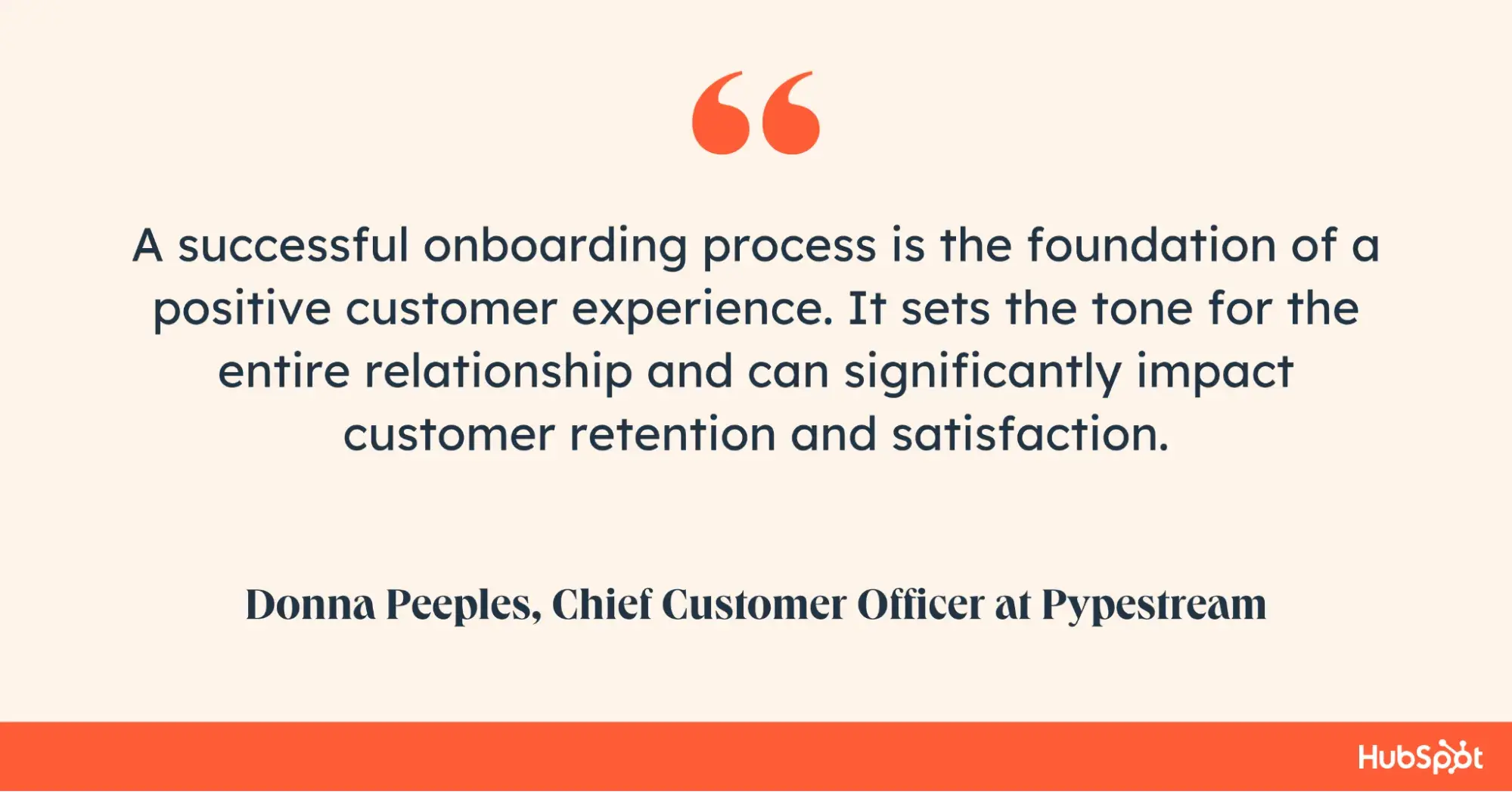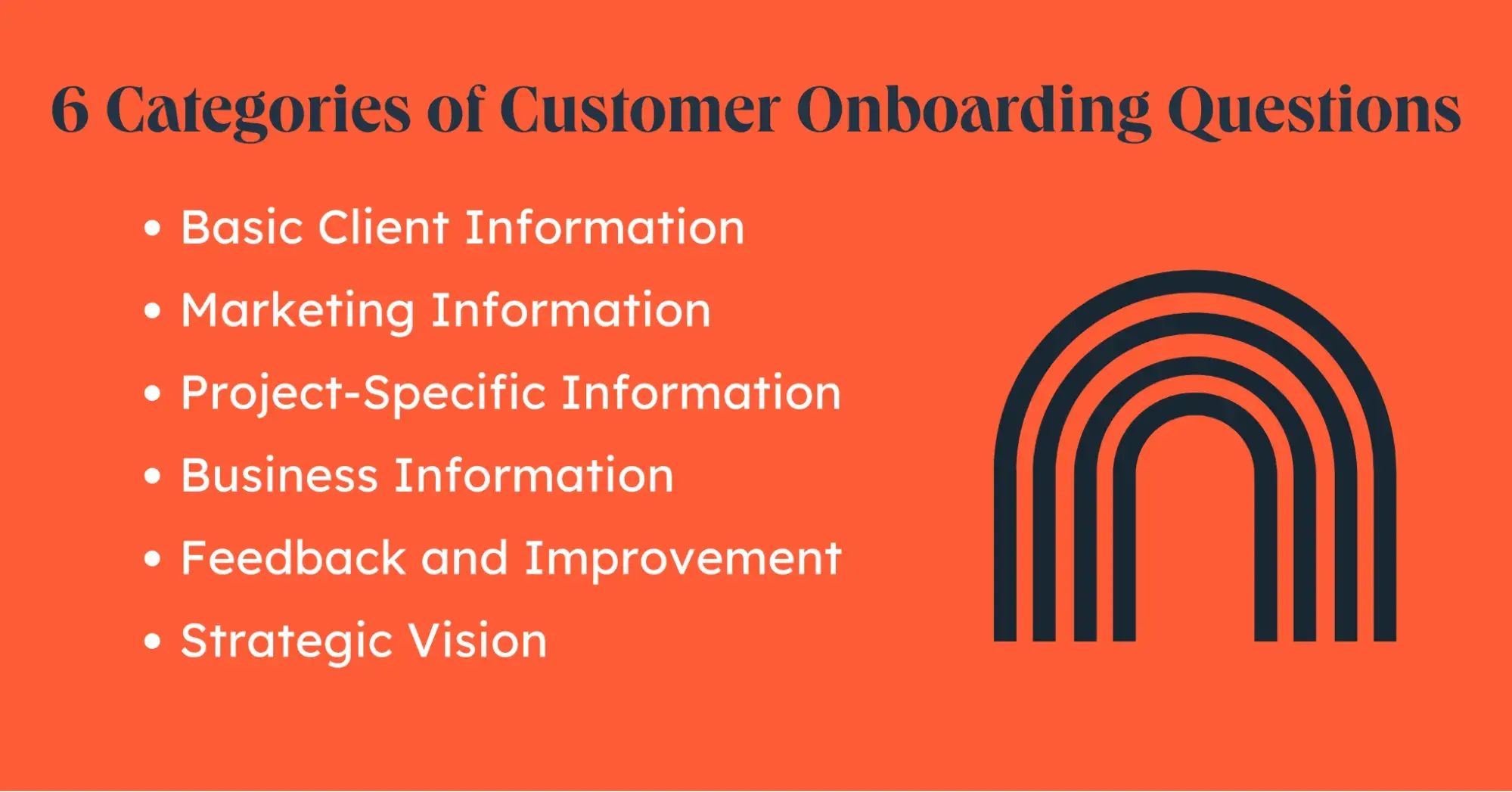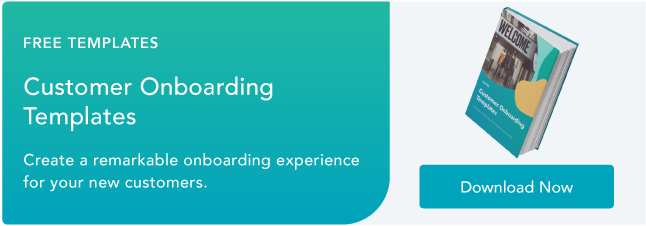New customers can feel overwhelmed and frustrated when learning and incorporating a new tool into their business processes, so it’s vital to get ahead of these struggles by setting them up for success at the beginning. Client onboarding can prevent churn at a volatile time of the customer journey, so you want to ensure you get it right!
Read on for a step-by-step onboarding guide and client onboarding questionnaire that will help you uncover customer needs and set them up for success with your business.
Table of Contents
- New Client Onboarding Questionnaire
- What is the Purpose of a Client Onboarding Questionnaire?
- 23 Customer Onboarding Questions to Include in a Questionnaire
- 5 Steps to Effective Client Onboarding
- Create a Winning Client Onboarding Questionnaire
New Client Onboarding Questionnaire
A client onboarding questionnaire is a survey sent to new customers to get more information about their goals. It can help you discover customer needs and pain points that will dictate the nature of your journey together with the customer.
You can use a free or paid online survey maker to create your onboarding questionnaire. These providers let you ask as many questions as you‘d like and create a survey design that aligns with your brand’s image.
What is the Purpose of a Client Onboarding Questionnaire?
A client onboarding questionnaire is a necessary first step in understanding customer needs and crafting a personalized and smooth onboarding experience.
Here are some benefits and reasons why client onboarding questionnaires are a thing.
- Gathering Essential Information. There are a lot of details that you’ll want to know about your client upfront — their business goals, past challenges, identifying stakeholders, and more. But if a digital onboarding process takes more than 20 minutes, 70% of customers will abandon opening an account. So, ensure this process is as streamlined as possible and you only ask for the most necessary information.
- Setting Expectations. Setting boundaries and expectations isn’t always the most fun thing in the world, but it's best to get it out of the way in the beginning. By understanding client preferences and objectives, you can help define the expectations of your working relationship going forward.
- Relationship Building. Your clients are more than just a number. You and your client are about to embark on a journey together where your successes are mutually beneficial. 86% of customers say they will remain loyal to a company if onboarding and continuous education are provided. A client onboarding questionnaire should foster trust and confidence in your company, assuring the customer that you have their best interests at heart.
- Streamlining Communication. A client onboarding questionnaire helps define the communication strategy between your business and theirs. Do they prefer to communicate via email? Or would they rather have a weekly check-in phone call?
- Improve Retention. Customers are 50% more likely to remain loyal to a company with an effective onboarding process. A client onboarding questionnaire helps you start on the right foot with your clients, setting them up for success in the long term.
You’ve heard of love languages before, right? A client onboarding questionnaire is kind of like that. It helps you discover your client’s business love language, if you will.
The onboarding process can determine the fate of your whole relationship with a customer, and if done right, you’ll have a prosperous future together. Companies with a robust onboarding process experience a 50% higher new-client retention rate, so it’s worth getting it right!
23 Customer Onboarding Questions to Include in a Questionnaire
A messy onboarding process will drive away 74% of new clients, so when creating your questionnaire, don‘t go overboard with adding questions. After all, you don’t want to give new clients too much work to do. Only include questions your team needs to know the answer to.
While your business‘s unique services and value proposition will impact the specific questions you add to your questionnaire, I’ve curated a list of the 23 best questions you can ask clients in an onboarding questionnaire.
To streamline navigation, we’ve divided them into six broad categories:
- Basic Client Information
- Marketing Information
- Project-Specific Information
- Business Information
- Feedback and Improvement
- Strategic Vision
Basic Client Information
1. Who's the main point of contact at your business?
Ask this question to streamline communication. While your company may have connected with multiple individuals during the sales and marketing processes, most companies prefer to designate a primary point of contact. Asking this question makes it easier for your team to get the necessary information and shows that you respect the client’s preferred communication preferences.
2. What's their contact information?
Along with asking who your primary contact(s) should be, ask for their contact information and their preferred method of being contacted. While many business contacts now have email, phone, and SMS channels, many have a preference when it comes to day-to-day operations, urgent requests, or other inquiries.
3. What's your business address?
While you likely have this information, adding this question to your questionnaire is worth it. Why? Because it gives your client the chance to select a different address if they prefer for mailings or other communications and also provides a paper trail if there’s an issue with the address given.
4. What are your website URLs?
Here, you’re looking for any websites associated with your new client. This includes their primary website, blogs, other informational sites, and all social media profiles. Since you’re working on behalf of the client, it’s worth knowing as much as possible about how they operate and what they’re doing online.
5. Are there any documents about your business that we should read and keep on hand? (If so, attach them here.)
Some businesses have preferred style guides or directions for content-creation agencies; others have specific sourcing, procurement, payment, and billing policies. By asking for these documents, you can start a continually updated repository that keeps you updated on key client operations.
Marketing Information
6. What are your brand's goals and vision?
Goals and vision are often two different things. Goals may be related to business objectives such as increased conversions or ROI, while visions usually speak to industry impact or reputation. Asking about both gives clients the chance to tell you about themselves in their own words, helping you better understand their focus.
7. Who are your main competitors?
The competition often informs best practices for your client. By asking this question on your questionnaire, you can research your client’s main competitors to see what they’re doing differently and if it’s working. This helps your team develop a strategy to keep your client on top or improve their position against competitors.
8. Who's your target audience?
Your client’s target audience helps you tailor services to meet their needs better. For example, if you’re a marketing firm, understanding their ideal customer lets you create campaigns to engage specific demographics, interests, or spending patterns.
Project-Specific Information
9. What are your overarching goals for this project?
Your clients came to you for a reason: to help them achieve project goals. This question lets them describe the big-picture outcomes they’re looking for and why they matter to the business.
10. What specific metrics can we use to measure success for this project?
Measurement matters. It tells your client if their project has succeeded and informs them of the next step in your partnership. Successful measurement, however, depends on the right metrics. Ask this question to understand what metrics the client wants you to use, how they define them, and how they measure success. Make sure to ask this question even if you’re generally familiar with the metrics being used since companies often have their unique approach to measurement.
11. What's your budget for this project?
Always ask about the budget up-front. It is better to know what you have to work with than reach the end of the project and discover you’re way over budget or realize you could have done more to help your client achieve their goals because they had more capital. Complete budget knowledge also lets you create a comprehensive breakdown of your services, their cost, and how this aligns with budget expectations.
12. What's your deadline for the project?
Even the best projects don’t always hit deadlines, but it’s essential to understand what your client’s timeline looks like. This lets you create a series of project milestones predicted on specific conditions, such as the client providing you with agreed-upon information. This helps instill client confidence and reduces the risk of potential conflict.
13. Have you worked with a similar company in the past? If so, what were the company, project, and results?
History helps you understand context. For example, if your client has worked with a similar service provider and their experience wasn’t positive, you have an opportunity to earn their trust and their ongoing business. But you also face the challenge of overcoming the negative impression of their previous experience with a company in the same space.
Business Information
14. How did you hear about our business?
This question helps your team better target your marketing efforts. For example, if clients consistently say they found your company on social media, you’re targeting the right audience. However, if very few clients talk about word-of-mouth referrals, work may be needed based on the impression clients have when projects are complete.
15. Why did you select our business for this project?
Asking clients to highlight what drew them to you lets you understand what they want. For example, if you’re a website design firm and clients point to the unique nature of the projects you’ve done in the past, this can inform your design decisions going forward to help ensure you create something that stands out.
16. What more can our team do to ensure this is a smooth, satisfactory process for you?
Based on previous experiences and company culture, new clients may have specific requests or preferences that can help streamline communication and reduce the risk of misunderstandings. As a result, it’s always worth asking this question up-front rather than two or three months into a project.
Feedback and Improvement
17. How do you prefer to provide feedback during the project?
Some clients prefer a hands-on relationship with your team, including many check-ins and phone calls throughout a project. On the other hand, some clients prefer a laissez-faire approach with only a few emails at critical touchpoints. Or something in between. Either way, it’s best to meet the expectations of client feedback styles from the beginning.
18. Have you faced any challenges with similar projects in the past? If so, what were they?
This fundamental question gives you insight into client expectations and pain points. If they have faced challenges in the past, you’ll want to understand them so you can tailor your strategy and get ahead of any problems.
19. Are there any specific areas where you expect frequent updates or progress reports?
This question is similar to number 17 but drills down more into the specifics. One client expects to see charts and spreadsheets every Monday, while another just wants to know how much of their money is spent per month. You won’t know which is which until you ask.
20. What are the top three things we could do to exceed your expectations?
You can’t exceed the client’s expectations if you don't know them. You can easily take client answers from this question and turn them into actionable goals for your team.
Strategic Vision
21. What are your long-term goals for your business over the next five years?
Understanding your client’s long-term business goals can inform your current relationship and strategy. Their long-term business goals may conflict with their outlined project goals, and you can help them work through that and adjust their strategy accordingly.
22. Are there any upcoming market trends or changes you are preparing for?
The answer to this question will vary widely depending on your client's market. Understanding their niche is crucial for developing comprehensive and future-proof strategies. 90% of consumers are willing to spend more with companies that personalize the customer service experience. Making the effort to understand your client’s place in the market and personalize onboarding accordingly will pay dividends.
23. How do you plan to scale or grow your business in the future?
Perhaps your client plans to lean heavily into social media for future growth. They may plan to open new brick-and-mortar locations and focus on word-of-mouth marketing. Whatever it is, understanding how your client anticipates their growth will inform your strategic vision for them.

5 Steps to Effective Client Onboarding
Now that you have an idea of what to include in your client onboarding questionnaire, let’s take a step back and look at the onboarding process as a whole.
Customers who have a positive onboarding experience are 4x more likely to become brand advocates. According to Doona Peeples, chief relationship engagement officer at Envestnet, Inc, a successful onboarding process is “the foundation of a positive customer experience.”
She says that it, “sets the tone for the entire relationship and can significantly impact customer retention and satisfaction.” Don’t miss the opportunity to convert customers into brand champions who spread love for your company far and wide.
Below are my five steps for effective client onboarding.
1. Establish the client.
Before doing anything, you should legally establish the client with your company. That means writing a proposal for the project, building a contract, and setting up payment for your work.
This step is vital because it ensures the client is bound to your agreement and that you‘re not doing work for free. Also, the proposal will set clear guidelines for the work you’ll be doing.
2. Understand your client's goals.
Even if you already know what the client hopes to accomplish, you should always have them directly explain their goals. You can do this with the client onboarding questionnaire.
Using this questionnaire, you can turn your client‘s answers into actionable team goals. Make sure everyone on your team is aware of each step and deadline, and use this time to assign a lead contact for the project based on who can best meet the client’s needs.
3. Schedule a kickoff meeting.
Once you’ve laid out, it's time for the kickoff meeting. The kickoff meeting is a chance to introduce your client to the team and get everyone excited about the project.
This meeting should set a confident tone by making it clear to the client that they put their trust in the right team. While this is a time for introductions, it‘s also a time to show the work that’s already completed. Relay your business goals, timeline, lead contact, and step-by-step responsibilities to prove to your client that you're ready.
4. Officially welcome the client.
Once the kickoff meeting is completed, you should formally welcome the client to your business. Send them a welcome package with a personalized note, video, and even some branded merchandise. This will act as proactive customer service and let the customer share their experience with others. 97% of customers prefer to be welcomed and educated by video, so don’t leave that out!
Additionally, you should provide any other essential documents and information that the client may need moving forward. This includes details about your business, like contact information, business hours, location, and reassuring documents like client testimonials and case studies. These resources make new customers feel more comfortable and further reassure their investment in your business.
5. Plan a check-in call after 30 days.
After 30 days, your team should check in with your client. Your plan has been sufficiently tested by this time, and your client will have a good feel for your team's progress.
Use this time to give your client feedback on the onboarding. Ask them any additional questions and address any of the client's concerns. Take this call seriously; the more genuine you are about hearing and responding, the less likely they are to churn.
For a smooth onboarding process, you can also read about the sales-to-service handoff.
Create a Winning Client Onboarding Questionnaire
Creating a winning client onboarding questionnaire is about giving new clients a chance to tell you about themselves. What are their business goals? Their experience with previous providers? What metrics do they use to measure success?
By creating a questionnaire that captures basic information about your client’s business and lets them highlight their specific needs, you can develop a reliable framework that encourages new clients to answer and helps streamline the onboarding process.
Editor's note: This article was originally published in June 2022 and has since been updated for comprehensiveness.
Customer Onboarding


.png)







![10 Customer Onboarding Challenges You Might Face This Year [+Expert Tips]](https://53.fs1.hubspotusercontent-na1.net/hubfs/53/ai%20customer%20service%20predictions%20(2).webp)

![Digital Onboarding: How to Make It Work For You [+ 5 Helpful Tools]](https://53.fs1.hubspotusercontent-na1.net/hubfs/53/digital%20onboarding_featured%20image.jpg)
![Perfect your customer onboarding with our expert tips [+ checklist]](https://53.fs1.hubspotusercontent-na1.net/hubfs/53/client-onboarding-best-practices-1-20251029-7553263.webp)
.webp)